


15 EAST 56th STREET
NEW YORK
Copyright, 1920, Gilman Collamore & Company, Inc.
Traditions and Old China
From early days when the ancients showed their appreciation of fine pottery and old glassware by burying “these most esteemed possessions” with the dead, fine china has been synonymous with culture and breeding. With our ancestors for generations we share the tradition that, just as first editions give prestige to one’s book shelves, old china or the finest work of the modern kilns express readily that good taste and discrimination that is characteristic of our old families.
A wealth of association and historic data is to be acquired from the study of the “fabrique marks” and periods of the master craftsmen. If in America there was a general tendency toward acquiring, even a smattering, of this knowledge, there would be less of these drawing-room atrocities which Arthur Hayden in his “Chats on English Earthenware” points out, “To have a modern set of vases adorning a Georgian cabinet is like putting new wine in old bottles.”
[Pg 2]For the convenience of the seasoned collector, as well as the beginner, in this book is a representative list of better known marks by which china can be identified. While it is not possible to include a complete list, particularly those of extremely rare specimens, those compiled have particular reference to the marks of English china which is greatly in demand by collectors. These will suffice to enable the reader to identify pieces whenever encountered.
The signatures or mark which the master craftsmen in earth or clay signed their products, just as a painter signs his work, were often specially designed devices of various kinds, often a combination of initials and dates. Each “fabrique mark” stands for a certain potter’s art just as the modern trade-mark.
Beginning more than a half century ago in the old La Farge House in lower Broadway (where John La Farge was born) the house of Gilman Collamore and Company has done much to develop an appreciation of fine china in America. It was one of the first houses to bring over from England and France china, both modern and old, for its American clients. At this time many fine specimens of old china are on view as well as complete stocks from the modern English and Continental manufacture.
GILMAN COLLAMORE & COMPANY, Inc.
15 East 56th Street
New York
 |
DRESDEN |
| MEISSEN. Established in 1709. Mark used to 1712, in blue. Hard paste. | |
 |
DRESDEN |
| Mark used from 1712 to 1720, in blue. Hard paste. | |
 |
DRESDEN |
| About 1720, mark in blue. Hard paste. | |
 |
DRESDEN |
| 1730, mark in blue. Hard paste. | |
 |
DRESDEN |
| 1796. MARCOLINI (Director) PERIOD. Mark in blue. Hard paste. | |
 |
DRESDEN |
| Royal pieces only. Mark in blue. Hard paste. | |
[Pg 4] |
DRESDEN |
| Present mark. This mark with two scratches across it shows imperfect pieces which may or may not have been decorated in the factory. Hard paste. | |
 |
VIENNA |
| Established in 1718. This mark first used in 1744. Hard paste. Royal factory discontinued in 1864. | |
 |
BERLIN |
| Established in 1751. Wegeleys’ mark. Hard paste. | |
 |
BERLIN |
| In 1763 became a royal establishment. Mark in blue. Sometimes an eagle added. | |
 |
BERLIN |
| Different kind of sceptre. In blue. Hard paste. | |
 |
BERLIN |
| An extra mark used in 1830 with the sceptre, which is the present mark. This mark complete is never used except with perfect pieces decorated in the factory. Decorated pieces bearing the blue sceptre mark only are decorated outside of the factory. | |
[Pg 5] |
HOCHST, near MAYENCE |
| Founded in 1720. This mark, used about 1740, in gold, red, or blue. Hard paste. | |
 |
HOCHST, near MAYENCE |
| Hard paste. | |
 |
FRANKENTHAL |
| 1755 to 1761. First period. Hard paste. | |
 |
FRANKENTHAL |
| 1799, second period. Carl Theodore. Hard paste. | |
 |
FRANKENTHAL |
| Phillipp Hanong (Director). Hard paste. | |
[Pg 6] |
FRANKENTHAL |
| Joseph Adam Hanong (Director). Hard paste. | |
 |
FRANKENTHAL |
| John Hanong (Director). Hard paste. | |
 |
FRANKENTHAL |
| 1800. Franz Bartolo (Director). Hard paste. | |
 |
NYMPHENBURG |
| Established in 1747. Hard paste. | |
 |
NYMPHENBURG |
| Hard paste. | |
[Pg 7] |
NYMPHENBURG |
| An early mark in blue. Hard paste. | |
 |
FURSTENBURG |
| Established in 1750. Hard paste. | |
 |
FURSTENBURG |
| 1758. Hard paste. | |
 |
LUDWIGSBURG or KRONENBURG |
| Established in 1758 to 1806. Hard paste. | |
 |
LUDWIGSBURG |
| First period. Hard paste. | |
[Pg 8] |
LUDWIGSBURG |
| Second period. Hard paste. | |
 |
LUDWIGSBURG |
| Hard paste. Mark in blue. | |
 |
FULDA |
| Established in 1763 to 1780. Hard paste. | |
 |
FULDA |
| Hard paste. The arms of Fulda. | |
 |
RUDOLSTADT |
| Established in 1758. Mark in blue. Hard paste. | |
 |
RAUENSTEIN |
| Established in 1760. Hard paste. | |
 |
LIMBACH |
| Established about 1761. Hard paste. | |
[Pg 9] |
LIMBACH |
| Another mark. Hard paste. | |
 |
LIMBACH |
| Another mark. Hard paste. | |
 |
GROSBREITENBACH |
| Established about 1770. Hard paste. | |
 |
GROSBREITENBACH |
| Hard paste. | |
 |
VOLKSTEDT |
| Established 1762. C. V. sometimes added with the arms. Hard paste. | |
 |
VOLKSTEDT |
| Another mark. Hard paste. | |
 |
VOLKSTEDT |
| Another mark. Hard paste. | |
[Pg 10] |
ANSPACH |
| Established about 1718. Hard paste. | |
 |
ANSPACH |
| Generally accompanied by letter A. Hard paste. | |
 |
ANSPACH |
| Hard paste. | |
 |
ANSPACH |
| Hard paste. | |
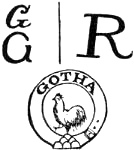 |
GOTHA |
| Founded in 1780. Hard paste. Various marks. | |
[Pg 11] |
GERA |
| Established about 1780. Marks in blue. Hard paste. | |
 |
ALT HALDENSTEBEN |
| The factory of M. Nathusins. Hard paste. | |
 |
CHARLOTTENBURG |
| Established in 1790. Hard paste. | |
 |
BADEN-BADEN |
| Established in 1753 to 1788. The edge of the ax in gold. Hard paste. | |
 |
COLOGNE |
| Factory of M. L. Cremer. Enameled Fayence. | |
 |
POPPLESDORF, near BONN |
| Fayence and porcelain. | |
 |
STRASBOURG |
| Established about 1752. Hard paste. | |
[Pg 12] |
NIDERVILLER |
| Established in 1768. Hard paste. | |
 |
ELBOGEN in BOHEMIA |
| Established in 1815. Hard paste. | |
 |
SCHLAKENWALD |
| Established about 1800. Hard paste. | |
 |
LEHAMMER or PIRKENHAMMER, near CARLSBAD |
| Founded in 1802. Hard paste. | |
 |
HEREND |
| Established 1839. | |
 |
HEREND |
| Another mark. |
 |
KORZEC |
| Established about 1803. Hard paste. | |
 |
Moscow |
| Established in 1787. Hard paste. | |
 |
ST. PETERSBURG |
| Mark in blue. Hard paste. | |
 |
ST. PETERSBURG |
| Mark of Empress Catherine II. 1762 to 1796. Mark in blue. Hard paste. | |
 |
ST. PETERSBURG |
| Monogram of Nicholas I. 1825 to 1855. | |
 |
ST. PETERSBURG |
| Established 1744. Mark in blue. |
 |
COPENHAGEN |
| Established in 1772. Mark in blue. Hard paste. |
 |
AMSTERDAM |
| Established in 1782. Mark in blue. Hard paste. | |
 |
AMSTERDAM |
| Mark in blue. Hard paste. | |
 |
AMSTERDAM |
| Mark in blue. Hard paste. | |
 |
TOURNEY |
| Mark in gold represents a potter’s kiln. Established in 1750. Soft paste. | |
 |
TOURNEY |
| Mark in gold used after 1755. Soft paste. | |
 |
TOURNEY |
| Used about 1755. Soft paste. | |
 |
HAGUE |
| Factory established about 1775; ceased in 1785. Mark in gray. Hard paste. | |
[Pg 15] |
DELFT |
| Joost Thooft and Labouchere. Present mark Fayence. |
 |
NYON |
| Established in 1790. Hard paste. | |
 |
ZURICH |
| Established about 1759. Mark in blue. Hard paste. |
 |
NOVE |
| 1752. Mark in blue or red. Soft paste. | |
 |
VENICE |
| Mark in red. Majolica. | |
 |
VENICE |
| Soft paste. | |
 |
VENICE |
| 1720 to 1740. Soft paste. Mark in red. | |
[Pg 16] |
VENICE |
| Soft paste. Mark in red. | |
 |
TURIN |
| Vineuf. Established about 1770. Dr. Gioanetti (Director). Soft paste. | |
 |
TURIN |
| Vineuf. Another mark. Soft paste. | |
 |
DOCCIA |
| Founded in 1735. Hard and soft paste. | |
 |
DOCCIA |
| Hard and soft paste. Another mark. | |
| GINORI. | DOCCIA |
| Hard and soft paste. Another mark. | |
 |
CAPO DI MONTE |
| Founded in 1736. This mark used from 1759. Factory abandoned in 1821. Soft paste. | |
 |
CAPO DI MONTE |
| Mark used from 1759. Soft paste. | |
[Pg 17]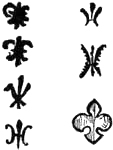 |
CAPO DI MONTE |
| Soft paste. Other marks. | |
 |
MILAN |
| Mark in blue. Fayence. | |
 |
MADRID |
| BUEN RETIRO. Monogram of Charles III. Established in 1759 to 1812. Soft paste. | |
 |
MADRID |
| Soft paste. Another mark. | |
 |
MADRID |
| Mark in blue. First quality. Soft paste. | |
 |
MADRID |
| Mark in blue. Soft paste. | |
[Pg 18] |
MADRID |
| Mark in blue. Mark under crown is another form of the monogram of Charles III., the founder. | |
 |
OPORTO |
| Established about 1790. Hard paste. Mark in gold or colors. |
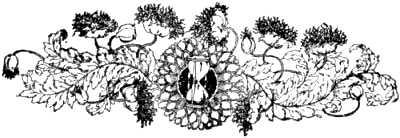
| WEDGWOOD. | STAFFORDSHIRE |
| Established in 1769. This mark both stamped and printed. | |
 |
STAFFORDSHIRE |
| WEDGWOOD, present mark on decorated china. | |
| TURNER. | STAFFORDSHIRE |
| Established about 1756. | |
| W. ADAMS. | STAFFORDSHIRE |
| Established about 1780. | |
| ROGERS. | STAFFORDSHIRE |
| Imitations of WEDGWOOD. | |
| WOOD and CALDWELL. | STAFFORDSHIRE |
| Established in 1730. | |
 |
STAFFORDSHIRE |
| Established 1790. | |
| LONGPORT. | STAFFORDSHIRE |
| Established in 1793 by Mr. John Davenport. | |
[Pg 20] |
STAFFORDSHIRE |
 |
STAFFORDSHIRE |
 |
STAFFORDSHIRE |
 |
STAFFORDSHIRE |
| Established about 1770, by Josiah Spode. | |
 |
STAFFORDSHIRE |
| Copeland successor of Spode in 1833. | |
 |
LIVERPOOL |
| Established in 1750. | |
| SADLER 1756. |
LIVERPOOL |
| Established in 1756. | |
 |
LIVERPOOL |
| Established in 1790. | |
| [Pg 21]HERCULANEUM POTTERY. |
LIVERPOOL |
| This mark was used from 1822 to 1833. | |
 |
PLYMOUTH |
| Established 1760. William Cookworthy. | |
 |
YARMOUTH |
| Absolon, only a decorator. | |
 |
SWANSEA |
| Established 1790. This mark used about 1815. | |
 |
SWANSEA |
| Mark in red. | |
| NANTGARW. | WALES |
| Established about 1813. Mark in red. | |
 |
LEEDS |
| Hartley Greens & Co. Established about 1770. | |
[Pg 22] |
BRISTOL |
| Established about 1770, by Richard Champion. | |
 |
BRISTOL |
 |
BRISTOL |
| Ceased in 1777. | |
 |
BOW |
| Established about 1730. Ceased in 1775. | |
 |
BOW |
 |
BOW |
 |
CHELSEA |
| The oldest mark. About 1747. | |
 |
CHELSEA |
| Mark in red. | |
 |
CHELSEA |
| First quality mark in gold. | |
[Pg 23] |
DERBY |
| Established 1751. This mark used before 1769. | |
 |
DERBY-CHELSEA |
| This mark in gold 1773. | |
 |
CROWN DERBY |
| Mark in blue used about 1780. | |
 |
DERBY |
| Mark used in 1830. Bloor (Director). | |
 |
DERBY |
| Mark used in 1830. Bloor (Director). | |
 |
DERBY |
| Mark used in 1860. | |
[Pg 24] |
ROYAL CROWN DERBY |
| Present mark. | |
 |
WORCESTER |
| Established 1751. Oldest mark. | |
 |
WORCESTER |
| Mark imitation of Dresden. | |
 |
WORCESTER |
| Generally on Chinese patterns. | |
 |
WORCESTER |
| About 1751. | |
 |
WORCESTER |
| Used 1783 to 1788. | |
[Pg 25] |
WORCESTER |
| Used 1807 to 1813. | |
 |
WORCESTER |
| Used 1857 to 1862. | |
 |
WORCESTER |
| Present mark. | |
 |
CAUGHLEY. SHROPSHIRE |
| Established about 1751. | |
 |
CAUGHLEY. SHROPSHIRE |
| An early mark in blue. | |
 |
COALPORT |
| Established between 1780 and 1790. | |
 |
COALPORT |
 |
COALPORT |
| Present mark. | |
 |
STAFFORDSHIRE |
| Established in 1791 by Mr. Thomas Minton. | |
[Pg 26] |
STAFFORDSHIRE |
| Present mark. | |
 |
LAMBETH and BURSLEM |
| Doulton & Co. | |
 |
STAFFORDSHIRE |
| Brown-Westhead, Moore & Co. |

 |
ST. CLOUD |
| Established about 1695. Factory destroyed by fire in 1773; not rebuilt. Soft paste. | |
 |
ST. CLOUD |
| This mark used from 1730 to 1762. Either in blue or graved in ware. The letter T stands for Tron, the name of the director. Soft paste. | |
 |
CHANTILLY |
| Established in 1735. Mark in blue or red. Soft paste. | |
 |
ARRAS |
| Established in 1782. Mark in blue. Factory ceased in 1786. Soft paste. | |
 |
MENECY |
| Established in 1735. This mark is usually impressed; sometimes traced in blue. Soft paste. | |
 |
ETIOLLES, near CORBEIL |
| Established in 1768. Monnier, manufacturer. Soft paste. | |
[Pg 28] |
BOURG LA REINE |
| Established in 1773. Jacques & Jullien. Soft paste. | |
 |
SCEAUX-PENTHIEVRE, near PARIS |
| Established in 1750 by Jacques Capelle. These letters are engraved on the soft clay. | |
 |
SCEAUX-PENTHIEVRE, near PARIS |
| The latter mark in blue. This mark occurs more frequently on Fayence. | |
 |
CLINGNANCOURT |
| Established in 1775 by Pierre Deruelle. Mark in blue. Soft and hard paste. | |
 |
CLINGNANCOURT |
| Used on pieces of Chinese style. Mark in red. Hard paste. | |
 |
CLINGNANCOURT |
| Mark of Monsieur Comte de Provence. | |
 |
ORLEANS |
| Established in 1753 by M. Gerré. Hard and soft paste. | |
 |
ORLEANS |
| This mark used from 1808 to 1871, in blue or gold. | |
[Pg 29] |
SARREGUEMINES |
| Soft paste. | |
 |
SARREGUEMINES |
| Soft paste and Fayence. | |
 |
VINCENNES |
| Soft paste. Established in 1786. | |
 |
VINCENNES |
| Soft paste. Another mark. | |
 |
PARIS. RUE FONTAINE AU ROY |
| Established in 1773 by Jean Baptiste Locré. Mark in blue. Hard paste. | |
 |
PARIS. FAUBOURG ST. LAZARE |
| Founded in 1773. Hard paste. | |
[Pg 30] |
PARIS. FAUBOURG ST. ANTOINE |
| Established in 1773. Morelle, manufacturer. Hard paste. | |
 |
PARIS. RUE DE LA ROQUETTE |
| Established in 1773. Souroux, manufacturer. Hard paste. | |
 |
PARIS. GROS CAILLON |
| Established in 1773 by Advenir Lamarre. Hard paste. | |
 |
PARIS. RUE DE CLICHY |
| Mark in blue. Hard paste. | |
 |
FRANCE |
| A mark found on biscuit groups. Factory unknown. | |
 |
PARIS. RUE THIROUX |
| Established in 1778. André Marie Lebeuf, manufacturer. Under the protection of Marie Antoinette. Mark in red. Hard paste. | |
 |
PARIS. RUE DE BONDY |
| Established in 1780. Dihl and Guerhard, manufacturers. Under the patronage of Duc d’Angoulême. Hard paste. | |
[Pg 31] |
PARIS. RUE DE BONDY |
| Another mark. Hard paste. | |
 |
PARIS. RUE DU FAUBOURG ST. DENIS |
| Established in 1769. Under the protection of Charles Philippe Comte d’Artois, afterward Charles X. Factory discontinued in 1810. | |
 |
BELLEVILLE |
| Established in 1790 by Jacob Petit. Mark in blue. Hard paste. | |
 |
PARIS. RUE DE BONDY |
| Hard paste. Mark in blue. | |
 |
ROUEN |
| Under the reign of Louis XV. Fayence. | |
 |
LILLE |
| Established in 1784 by Leperre Durot. Mark in red. Hard paste. | |
[Pg 32] |
PARIS |
| M. Nast, manufacturer. Mark in red. Hard paste. | |
 |
PARIS |
| Halley, manufacturer. First Empire mark in gold. Hard paste. | |
 |
NANCY |
| Emile Gallé, manufacturer. Fayence and glass. |

| Established at Vincennes in 1740. |
| Removed from there to Sevres in 1756. |
| King Louis XV. became sole proprietor in 1760. |
| Soft paste was made until 1805. Since then only hard paste. |
The Sevres Marks
| FIRST ROYAL EPOCH 1745 to 1792    Vincennes. The letter A denotes the year 1753, continued to 1777. (Louis XV.)  Sevres. Ornamented LL’s. Date 1764.  Sevres. Date 1778. (Louis XVI). Double letters continued to 1793. FIRST REPUBLICAN EPOCH 1792 to 1804  [Pg 34]     1792 to 1799.  1801 to 1804. FIRST IMPERIAL EPOCH. 1804 TO 1814.  Napoleon. 1804 to 1809.  Napoleon. 1809 to 1814. SECOND ROYAL EPOCH. 1814 TO 1848.  Louis XVIII 1814 to 1823.  Charles X. 1824 to 1829.  Charles X. 1829 and 1830. [Pg 35]  Charles X. 1830.   Louis Philippe. 1831 to 1834. 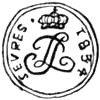 Louis Philippe. 1834-1835. 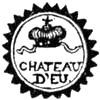 On services for the Palaces.  Louis Philippe. 1845-1848.  After 1848, this mark in green was used for white porcelain. SECOND REPUBLICAN EPOCH 1848 TO 1851.  The S stands for Sèvres, and 51 for 1851. SECOND IMPERIAL EPOCH. 1852 TO 1872.  [Pg 36]  Napoleon III. From 1852.  This mark used for white pieces; when scratched it denotes issue undecorated. | ||
 | The marks used at the present time. |
 |
Unknown Marks
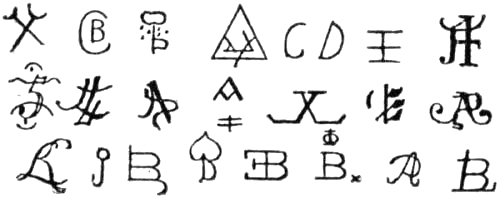
Chronological Table
Used in the Manufactory of Sevres
| A | (Vincennes) | 1753 |
| B | (ditto) | 1754 |
| C | (ditto) | 1755 |
| D | 1756 | |
| E | 1757 | |
| F | 1758 | |
| G | 1759 | |
| H | 1760 | |
| I | 1761 | |
| J | 1762 | |
| K | 1763 | |
| L | 1764 | |
| M | 1765 | |
| N | 1766 | |
| O | 1767 | |
| P | 1768 | |
| Q | [1]1769 | |
| R | 1770 | |
| S | 1771 | |
| T | 1772 | |
| U | 1773 | |
| V | 1774 | |
| X | 1775 | |
| Y | 1776 | |
| Z | 1777 | |
| AA | 1778 | |
| BB | 1779 | |
| CC | 1780 | |
| DD | 1781 | |
| EE | 1782 | |
| FF | 1783 | |
| GG | 1784 | |
| HH | 1785 | |
| II | 1786 | |
| JJ | 1787 | |
| KK | 1788 | |
| LL | 1789 | |
| MM | 1790 | |
| NN | 1791 | |
| OO | 1792 | |
| PP | 1793 | |
| 1794 | ||
| RR | 1795 |
| Year | IX | 1801 | T9 | ||
| " | X | 1802 | X | ||
| " | XI | 1803 | 11 | ||
| " | XII | 1804 |  | ||
| " | XIII | 1805 |  | ||
| " | XIV | 1806 |  |
| 1807 | 7 | |||
| 1808 | 8 | |||
| 1809 | 9 | |||
| 1810 | 10 | |||
| 1811 | (onze) | o.z. | ||
| 1812 | (douze) | d.z. | ||
| 1813 | (treize) | t.z. | ||
| 1814 | (quatorze) | q.z. | ||
| 1815 | (quinze) | q.n. | ||
| 1816 | (seize) | s.z. | ||
| 1817 | (dix sept) | d.s. | ||
From this date the year is expressed by the last two figures only.—thus, 18 for 1818, etc.,—up to the present time.
Footnote:
[1] This comet was sometimes substituted for the ordinary mark of the letter Q.
